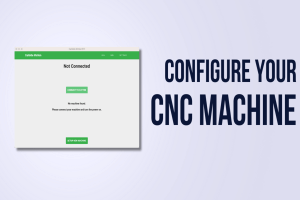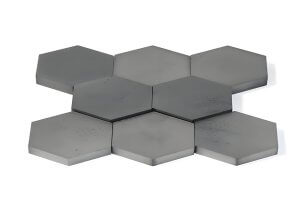When it comes to CNC machining, drilling ceramic materials presents a unique set of challenges. Ceramics are hard, brittle, and require specialized techniques to achieve precision without compromising the material’s integrity. For those involved in the procurement of custom flanges or other precision-engineered parts, understanding the intricacies of CNC drilling in ceramics is crucial. This article will explore the key factors influencing ceramic drilling, including the choice of tool materials, cooling conditions, spindle speed, and tool angles, all aimed at optimizing material removal rates and ensuring superior quality.
The Challenge of Drilling Ceramics
Ceramics are widely used in various industries due to their excellent mechanical properties, such as high hardness, wear resistance, and chemical stability. However, these same properties make them difficult to machine, especially when drilling. The brittleness of ceramics means that improper techniques can easily lead to cracking, chipping, or even catastrophic failure of the workpiece. Therefore, mastering the art of ceramic drilling requires a deep understanding of the material’s behavior under different machining conditions.
Tool Materials: The Foundation of Successful Drilling
The choice of tool material is one of the most critical factors in ceramic drilling. Traditional high-speed steel (HSS) tools are often inadequate for ceramic materials due to their lower hardness and wear resistance. Instead, carbide tools, particularly those made from tungsten carbide (YG6X), are preferred for their superior hardness and durability.
In experiments with fluorophlogopite glass ceramics, carbide drills were found to perform significantly better than HSS drills. Under no cooling conditions, HSS drills experienced severe wear and edge curling within just five seconds of operation. In contrast, carbide drills maintained their integrity and cutting efficiency over extended periods, making them the go-to choice for ceramic drilling.
The Impact of Cooling Conditions
Cooling plays a vital role in the drilling of ceramics. The high friction and cutting forces generated during drilling can lead to excessive heat, which not only accelerates tool wear but also risks thermal damage to the ceramic material. Water-based coolants are commonly used to mitigate these effects, reducing tool temperatures and extending tool life.
A study showed that using water cooling during the drilling of glass ceramics increased the material removal rate by nearly four times compared to dry drilling. Additionally, the same study found that cooling allowed for a 50% increase in continuous drilling time before significant tool wear occurred, highlighting the importance of proper cooling in ceramic machining.
Spindle Speed: Finding the Sweet Spot
Spindle speed is another crucial parameter in CNC drilling. The relationship between spindle speed and material removal rate is generally positive; higher speeds tend to increase the rate of material removal. However, there is a limit beyond which further increases in speed lead to diminishing returns and accelerated tool wear.
For instance, in drilling glass ceramics, it was observed that spindle speeds above 3000 rpm resulted in faster tool wear and reduced drilling times. At 3000 rpm, a drill could operate effectively for 11 minutes, removing a substantial volume of material. However, increasing the speed to 6300 rpm reduced the effective drilling time to just 8 minutes, as the tool wear became more pronounced. This underscores the need to balance spindle speed with tool life to achieve optimal drilling performance.
Tool Angles: Precision in Every Cut
The geometry of the drilling tool, particularly the drill point angle, significantly impacts the drilling process. The point angle determines the contact area between the tool and the material, influencing both the cutting forces and the heat generated during drilling.
For ceramic materials, an optimal point angle range is typically between 80° and 115°. Within this range, the material removal rate remains relatively consistent, with minimal differences between the maximum and minimum values. A point angle of around 100° was found to be particularly effective, balancing the cutting forces and minimizing tool wear.
When the point angle deviates too far from this optimal range, the tool’s cutting edges either become too short or too long, leading to increased wear and reduced drilling efficiency. A larger point angle tends to cause wear along the main cutting edges and the chisel edge, while a smaller point angle increases wear near the chisel edge, eventually leading to its complete wear-out.
Optimizing Drilling Parameters for CNC Machined Parts
To achieve the best results in ceramic drilling, it is essential to optimize all relevant parameters, including tool material, cooling conditions, spindle speed, and tool angles. Each of these factors interacts with the others, and a change in one parameter can influence the effectiveness of the others.
For instance, while increasing spindle speed may boost the material removal rate, it should be done in conjunction with adequate cooling and using a tool with the correct geometry to prevent premature tool wear. Similarly, selecting a high-quality carbide drill with a well-optimized point angle will reduce the need for frequent tool changes, improving overall efficiency.
The table below summarizes the key findings from various studies on ceramic drilling, providing a reference for selecting the appropriate drilling parameters for CNC machined parts.
| Parameter | Optimal Range/Condition | Effect on Drilling |
|---|---|---|
| Tool Material | Tungsten Carbide (YG6X) | Superior hardness and wear resistance, essential for drilling hard ceramics. |
| Cooling Condition | Water-Based Cooling | Increases material removal rate by up to 4x, significantly extends tool life. |
| Spindle Speed | 3000 – 4000 rpm | Balances material removal rate with tool life; higher speeds lead to increased wear. |
| Drill Point Angle | 80° – 115° (Optimal at 100°) | Maintains consistent material removal rates and minimizes tool wear. |
| Material Removal Rate | 100 mm³/min – 130 mm³/min (Depending on specific conditions) | Ensures efficient drilling while preserving tool integrity. |
| Tool Wear | Minimized with proper combination of above parameters | Ensures longer tool life, reducing operational costs and downtime. |
Conclusion: Precision and Efficiency in CNC Drilling
Drilling ceramics is a complex process that demands a precise balance of multiple factors to achieve optimal results. For those involved in the procurement of CNC machined parts, particularly custom flanges and other precision components, understanding these factors is crucial.
By selecting the right tool materials, ensuring adequate cooling, optimizing spindle speed, and choosing the appropriate tool angles, manufacturers can achieve high-quality drilling in ceramics while maximizing efficiency and minimizing costs. The insights provided in this article serve as a guide to mastering the art of ceramic drilling, ensuring that CNC machined parts meet the highest standards of precision and performance.
Other Articles You Might Enjoy
- Unraveling the World of CNC Machined Plastic Parts(CNC machined plastic parts Mabel)
Modern innovations have taken traditional manufacturing methods to new heights. One such innovation that stands out is Computer Numerical Control (CNC) machining, a process used extensively in various industries from…
- CNC Machined Plastic Parts: An In-depth Overview(CNC machined plastic parts Norman)
Computer Numeric Control (CNC) machining is an advanced manufacturing process where pre-programmed software dictates the movement of factory machinery and tools. These applications can carry out complicated manufacturing tasks with…
- Enhancing CNC Machining with Smart Alloys: Shape Memory Metals vs. Traditional Alloys
Introduction to CNC Machining Computer Numerical Control (CNC) machining stands as a cornerstone in modern manufacturing, enabling the precise and automated shaping of materials. This technology relies heavily on the…
- CNC Machined Parts Precision Ceramic Milling with Diamond-Coated Tools
Introduction When it comes to precision in manufacturing, particularly in industries where durability and heat resistance are paramount, ceramic materials often take center stage. Whether it’s aerospace, medical devices, or…
- CNC Machined Parts Mastering Advanced Ceramic Machining Techniques
In the realm of CNC machining, ceramics represent a significant challenge and opportunity. Their extraordinary properties, such as high hardness, wear resistance, and thermal stability, make them ideal for high-performance…
- The Ultimate Guide to Acquiring CNC Machined Parts
In today's business landscape, there are two main categories: production and services. While service-based businesses are easier to establish, production businesses hold greater potential for growth. If you're considering venturing…






